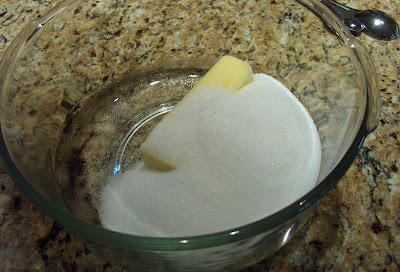4. Sweets for the Sweet (February 12 - February 25) It's sugar, and maybe spice, and definitely everything nice. Test out a historic recipe for sweets, sweetmeats and candies - but don't let them spoil your appetite!
February 29th - Leap Year Day, an extra Monday (why?), and our wedding anniversary. Our 24th wedding anniversary is a perfect excuse to have a sweet something special created for the Historical Food Fortnightly Challenge #4. It's four days past the due date, but since we only have a wedding anniversary every four years, I'm okay with the plan.
For all of the Challenges for 2016 I'm using a home study course book entitled
Twenty Lessons in Domestic Science by Marian Cole Fisher, Copyright 2016.
What could be more perfect to celebrate a wedding anniversary than a Bride's Cake?
There is a lot of good information regarding cake baking and I focus on this little bit about layer vs. loaf cakes. I remember my grandmother, who was born in 1897, baking cakes in the loaf pans she used for baking bread, so I decide to do the same and not worry about the adjustments required for layer cakes.
As with all the other recipes I've used in the 100-year-old book, the ingredients are simple.
I grease and flour the pan.
Sift the flour once, add the baking powder, then sift four more times.
Unsalted butter and sugar ready for creaming.
Eggs separated and ready for beating until very stiff. I always separate my eggs over one bowl and then pour the yokes in a second bowl and the whites in a third. I'm not always delicate with my eggs and as you can see there are some broken yokes and some white from the 7 eggs I had to use. But not to waste, these will be good with milk and become scrambled eggs for breakfast tomorrow!
When everything is put together in order the batter becomes beautiful and smooth.
Some splitting on top of the loaf during baking and the aroma is heavenly!
While the cake cools I make some icing with this very simple recipe. I was going to make the Orange Icing but then realized I ate my last orange at breakfast. So Plain Icing it will be.
Just confectioner's sugar and hot milk, mixed, and allowed to set for an hour.
The icing is thin and I drizzle it across the Bride's Cake, add some orange blossoms in honor of wedding tradition, and here is our Sweets for the Sweet!
The icing sets up into a beautiful shiny glaze and both cake and icing are delicious! The cake is very dense and flavorful, the icing mild and sweet and the perfect compliment. Just a perfect cake for two people on their wedding anniversary!
Love always,
Jeanette
















































